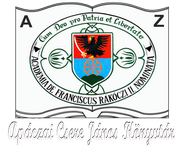Please use this identifier to cite or link to this item:
https://dspace.kmf.uz.ua/jspui/handle/123456789/4785| Title: | Сучасні особливості географії харчування світу |
| Other Titles: | Geospatial aspects of world food geography |
| Authors: | Заставецька Леся Zastavetska Lesia Мариняк Ярослав Maryniak Yaroslav Стецько Надія Stetsko Nadiia |
| Keywords: | географія харчування;основні типи харчування;населення;продовольча забезпеченість;продовольча криза |
| Issue Date: | 30-Aug-2024 |
| Publisher: | Видавничий дім «Гельветика» |
| Type: | dc.type.study |
| Citation: | In Acta Academiae Beregsasiensis: Geographica et Recreatio. 2024. № 4. c. 5-16. |
| Series/Report no.: | ;№ 4. |
| Abstract: | Резюме. Актуальність дослідження. Розглянуто питання географії харчування та їх представлення у відповід-них публікаціях. З’ясовано, що в трактуванні географії харчування як наукового напряму історично склали-ся різночитання в українськомовних та іншомовних наукових джерелах. Продовольча безпека є складною глобальною проблемою людства. Вона, як правило, є продовженням або складником політичної безпеки конкретної країни. Предмет дослідження становить вивчення різних аспектів формування та розвитку чинників географії харчування світу з метою їх групування та типізації. Мета дослідження: визначити основні географічні відмінності харчового раціону світу населення та проаналізувати чинники його форму-вання, а також з’ясувати основні типи харчування з огляду на сучасні наукові трактування. Методологія дослідження: використано методи аналізу, синтезу, теоретичного узагальнення, порівняльну характерис-тику, статистичні (групування, типологія), географічний – у трактуванні основних джерел харчування. Результати дослідження: розглянуто проблеми належного забезпечення населення продовольством у кра-їнах світу. Застосовано географічний метод при характеристиці цього питання, проведено аналіз харчо-вого раціону населення, виокремлено географічні відмінності харчового раціону населення світу. Здійснено типологію країн за особливостями споживання їжі через поділ їх на групи (види) харчування відповідно до вмісту та кількості основних компонентів у раціоні харчування. Вивчено суспільно-географічні аспекти споживання продовольства населення України. Практичне значення: отримано результати, які свідчать, що продовольча проблема має географічний характер. Країни світу, маючи у своєму розпорядженні різно-манітні агрокліматичні умови, демографічні ресурси й темпи зростання населення, соціально-економічний потенціал, спеціалізацію та продуктивність праці сільськогосподарського виробництва, суттєво відрізня-ються за рівнем продовольчої забезпеченості населення й за структурними характеристиками харчового раціону. Висновки: з’ясовано суспільно-географічні аспекти споживання продовольства населенням світу та України. Перспективи подальших досліджень: відмінності в забезпеченні населення продовольством зберігаються, і це робить актуальним цей напрям досліджень у соціально-економічної географії. Abstract. Relevance of the study: The article deals with the issues of nutrition geography and their presentation in relevant publications. It has been found that the interpretation of nutrition geography as a scientific field has historically been misinterpreted in Ukrainian, French and English and other languages. Food security is a complex global problem of humanity. It is usually a continuation or a component of the political security of a particular country. The subject of the research: is the study of various aspects of the formation and development of the factors of the world’s food geography in order to group and typify them. The purposeof the study: to determine the main geographical differences in the diet of the world's population and analyze the factors of its formation, as well as to identify the main types of nutrition based on modern scientific interpretations. Research methodology: the methods of analysis, synthesis, theoretical generalization, comparative characterization, statistical (grouping, typology), and geographical in the interpretation of the main sources of nutrition were used. The results of study: the problems of adequate food supply in the countries of the world are considered. The geographical method was used to characterize this issue, the analysis of the population’s diet was carried out, and geographical differences in the world's food rations were identified. The typology of countries according to the peculiarities of food consumption is carried out by dividing them into groups (types) of food according to the content and quantity of the main components in the diet. The socio-geographical aspects of food consumption by the population of Ukraine are studied, using domestic and foreign sources. Practical significance: the results obtained show that the food problem is geographical in nature. Countries of the world, having different agro-climatic conditions, demographic resources and population growth rates, socio-economic potential, specialization and labor productivity of agricultural production, significantly differ in the level of food security of the population and the structural characteristics of the food ration. Conclusions: the socio-geographical aspects of food consumption by the population of Ukraine and the world are clarified. Prospects for further research: differences in the provision of food to the population remain a relevant area of research in socio-economic geography. |
| Description: | Редакція: https://journals.kmf.uzhgorod.ua/index.php/geograph/editorial Зміст: https://journals.kmf.uzhgorod.ua/index.php/geograph/issue/view/4 |
| URI: | https://dspace.kmf.uz.ua/jspui/handle/123456789/4785 |
| ISSN: | 2786-5843 (Print) 2786-6440 (Online) |
| metadata.dc.rights.uri: | http://creativecommons.org/licenses/by-nc-nd/3.0/us/ |
| Appears in Collections: | Acta Academiae Beregsasiensis: Geographica et Recreatio |
Files in This Item:
| File | Description | Size | Format | |
|---|---|---|---|---|
| Zastavetska_Lesia_Maryniak_Yaroslav_Uchasni_osoblyvosti_heohrafi_kharchuvannia_2024.pdf | In Acta Academiae Beregsasiensis: Geographica et Recreatio. 2024. № 4. c. 5-16. | 297.96 kB | Adobe PDF | View/Open |
This item is licensed under a Creative Commons License





